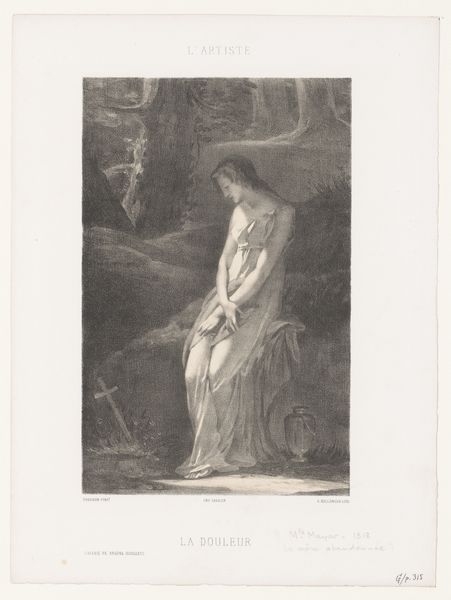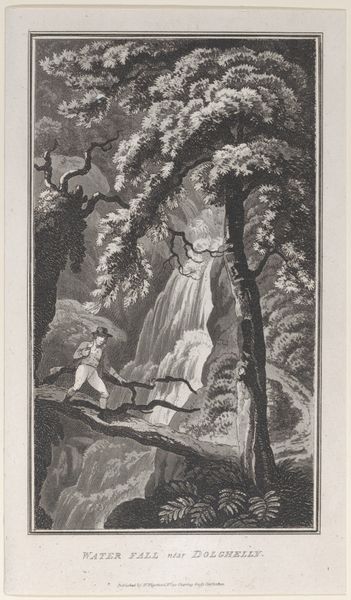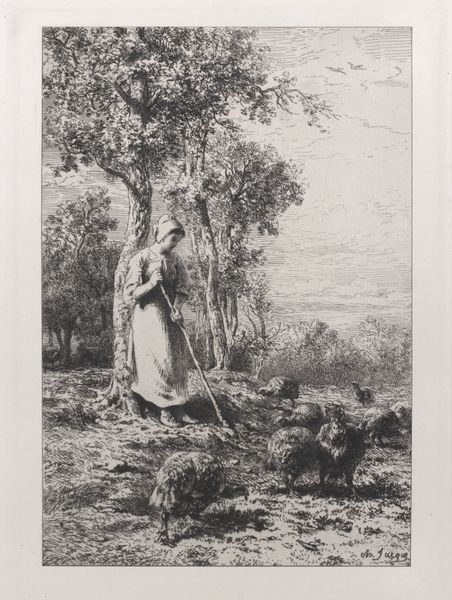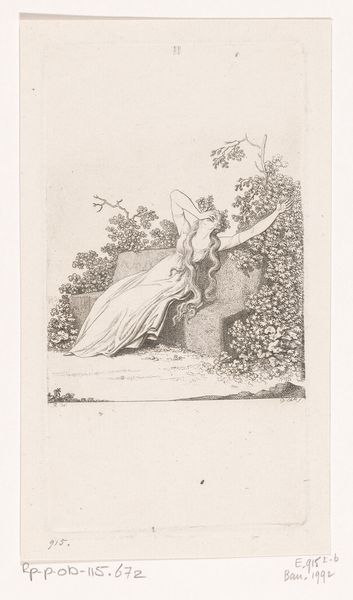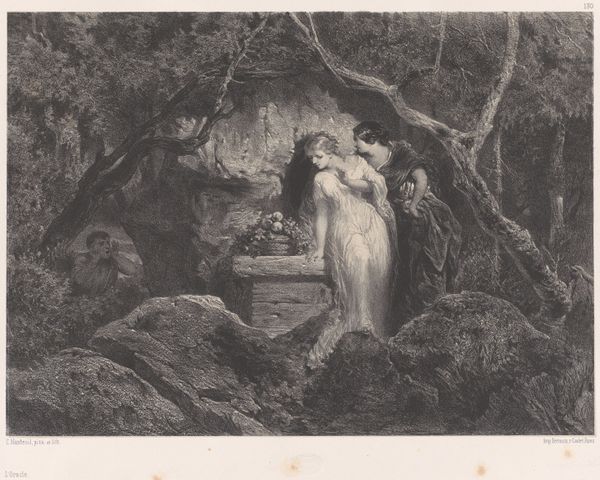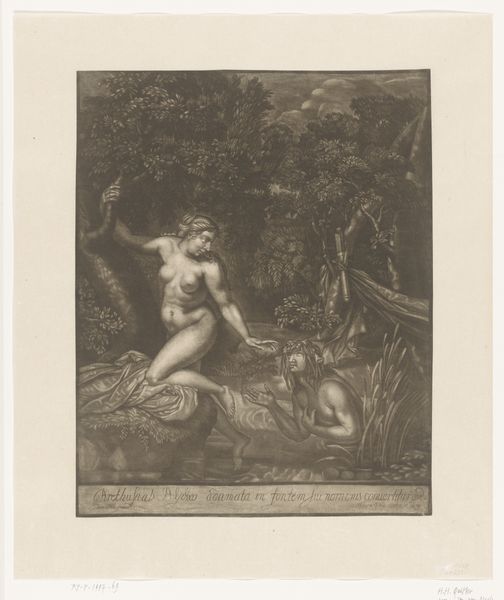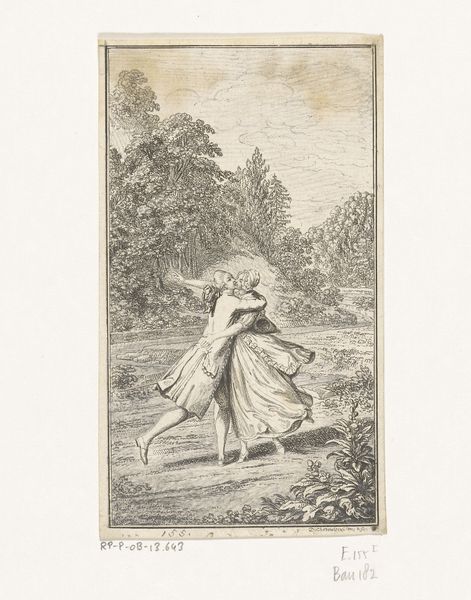
Ophelia (Shakespeare, Hamlet, Act 4, Scene 7) 1825 - 1833
0:00
0:00
drawing, print
#
drawing
#
narrative-art
# print
#
landscape
#
figuration
#
romanticism
#
line
#
history-painting
#
academic-art
Dimensions: Sheet: 3 7/16 × 2 9/16 in. (8.8 × 6.5 cm)
Copyright: Public Domain
Curator: This is "Ophelia," a print created between 1825 and 1833 by Charles Heath the elder, currently residing at the Metropolitan Museum of Art. It depicts a scene from Shakespeare's Hamlet. Editor: Oh, that explains the melancholy clinging to it! The high contrast print, the woman reaching into the murky water. There's a sense of tragic inevitability hanging in the air, isn’t there? It feels…claustrophobic, almost, even with the implied landscape. Curator: Absolutely. The Romantic style really amplifies that feeling. Consider Ophelia's vulnerability, her agency stripped away by the patriarchal structures represented by Hamlet and her father, Polonius. Her death becomes, in many ways, a symbol of silenced female voices throughout history. Editor: That’s true, isn’t it? And you can see it in the way Heath's depicted her – like she’s almost dissolving into the landscape, returning to nature. Her hair flowing and tangled like the branches around her. There is an innocence to it. A visual metaphor for how she just couldn't navigate the machinations of the court. Curator: Precisely. Notice how her gaze is directed outward but with a peculiar lack of focus. It's symbolic of the internal turmoil driving Ophelia toward oblivion; here we see both madness and resistance against the limitations imposed on her. It challenges our notions of sanity, feminine virtue and ultimately societal expectations during that time period and arguably today. Editor: It's such a beautiful, sad piece. Like a whisper of a memory, but the weight of history pressing down. What do you make of the light against her dress? Does the high contrast of this piece imply her internal state? I love the idea of finding power, however passive, in these darker romantic narratives! Curator: Exactly. Ophelia isn’t simply a victim. Her descent into madness, rendered here in stark light, and dramatic lines, can also be read as a form of rebellion, reclaiming her narrative from a world that sought to control it. Editor: I find myself changed by that new perspective. Maybe her watery demise wasn't an ending. It was another beginning after all. Curator: Yes! An enduring point from which we can reassess, reflect, and hopefully resist similar repressions going forward.
Comments
No comments
Be the first to comment and join the conversation on the ultimate creative platform.
